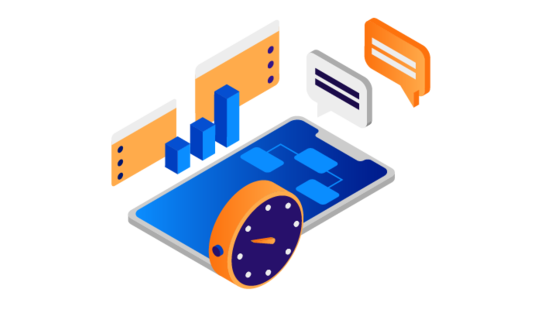-
Product Management
Software Testing
Technology Consulting
-
Multi-Vendor Marketplace
Online StoreCreate an online store with unique design and features at minimal cost using our MarketAge solutionCustom MarketplaceGet a unique, scalable, and cost-effective online marketplace with minimum time to marketTelemedicine SoftwareGet a cost-efficient, HIPAA-compliant telemedicine solution tailored to your facility's requirementsChat AppGet a customizable chat solution to connect users across multiple apps and platformsCustom Booking SystemImprove your business operations and expand to new markets with our appointment booking solutionVideo ConferencingAdjust our video conferencing solution for your business needsFor EnterpriseScale, automate, and improve business processes in your enterprise with our custom software solutionsFor StartupsTurn your startup ideas into viable, value-driven, and commercially successful software solutions -
-
- Case Studies
- Blog
How Much Does It Cost To Build MVP for Web App
When it comes to creating a new web app, whether it’s a social network, or a project management tool, or anything else, it’s always important to estimate your expenses. In this blog post we’d like to help you define: How much does it cost to build a web application?
Unlike with many other web development company blog posts, you’ll get detailed web app MVP cost variations in different countries, not an abstract overview of the estimation approaches.
Why are we talking about the cost of MVP?
When clients reach us with new ideas for products, we — as a web development company — always start with implementing an MVP. MVP stands for Minimum Viable Product and introduces a first version of your product that has very limited functionality yet already addresses user’s needs or problems and is ready to hit the market.
For instance, let’s imagine you want to build an online document editor. MVP may not have a huge amount of formatting tools and exporting options, but it should provide a basic option of editing plain-text documents online to address the target audience’s core problem.
Now, based on our experience, we can say that most MVPs have many things in common. For instance, in most cases you will want your site visitors to be able to sign up to access more functionality, publish and/or interact with content and so on. So we will provide a list of those common functions that you will then be able to filter out and pick only the ones required for your service and find out how much does it cost to build an App out of your idea.
MVP Project Scope

To estimate the cost of any MVP, we will provide you with the list of the most common features we implement in MVPs built for our clients.
The general project scope includes the next types of work:
- UI/UX responsive design (how the product will look and behave)
- HTML/CSS responsive implementation (how its design is going to be coded in the interface)
- Backend programming (how it’s going to function in terms of business logic)
- Frontend programming (how users will be interacting with it)
- Automation tests (aimed to get rid of any possible bugs, errors, unusual behavior)
- Acceptance manual testing (to check that the product fits the initial requirements)
All these aspects will be considered when estimating the amount of efforts required to implement most common MVP features and forming its price.
When we’re saying ‘efforts’, you most probably think of hours. But the problem is a developer newbie will require more time to implement the same functionality than a professional programmer. This is how story points were introduced, allowing to measure not the time, but the complexity of the tasks. If you want to learn more about it, check out our Story Points vs Hours blog post.
Functionality
Finally, let’s proceed to the functionality we implement in the most MVPs. Note that in most web apps there are at least two user roles:
- Site visitor. This is a person who simply visits the site.
- Logged in user. This is a visitor who has signed up and then signed in into the site to access additional functionality.
Before implementing the specific functionality, any product requires the next things to be done:
UI/UX design
It includes defining UX scenarios, designing the logo, picking the color scheme and setting a style guide if required.
Estimates: 4 story points
Database and WEB application design
This stage includes configuration of development backend and frontend tools, database design and running deployment scripts.
Estimates: 4 story points
Now we can proceed to the functionality implementation.
Authorization and security
Site visitors should be able to:
- Sign up in the system using email and password or a social network (Facebook, Twitter, G+)
- Log in to the system using email and password or a social network (Facebook, Twitter, G+)
- Reset their passwords in case they forgot it
Logged in users should to be able to:
- Update their settings (name, email, password, etc.)
- Make their private data unavailable for other users
Estimates: 8 story points
Payments & subscription plans
Any web app provides some value, and if you’re planning to get money in exchange of providing that value, you’ll want to allow your users to pay for that app either via one-time payment or via subscription plans (which is a most common option).
Site visitors should be able to:
- See detailed description of website services
- Order a service from the website by choosing a service plan
- Provide a payment using their credit cards
Logged in users should to be able to:
- See the history of their payments at the settings page
- Manage payment methods
- Change/Pause/Stop their subscription plans
Estimates: 9 story points
Dynamic content
Dynamic content is the content that can be changed and/or edited by end users. For instance, you may want to allow your users to post articles with images, or publish a portfolio with detailed description. That requires the corresponding functionality to be implemented.
Logged in users should to be able to:
- Add a content on the website: title, description, media content (images, video, audio), geolocation
- Browse/Change/Delete my earlier added content
Site visitors should be able to:
- Filter/Search for specific content
- See search results after using Filter/Search
- See detailed information about a content
Estimates: 15-20 story points.
Note: the final amount of story points depends on the required functionality. Obviously, if you want to allows users to post media-rich content (like in blogs), it will require more time to implement, than to allow, say, simple text messaging (like in chats).
Commenting
Logged in users should to be able to:
- Comment a content on the website
Site visitors should to be able to:
- See comments made by other users
Estimates: 4 story points
Liking
Logged in users should to be able to:
- Like/dislike content on the website
Site visitors should to be able to:
- See likes/dislikes made by other users
Estimates: 2 story points
Messaging system
Logged in users should to be able to:
- Send messages to other users
- Reply on messages from other users
- See a history of conversations with other users
- See notifications of new messages
Estimates: 8 story points
Friendship and following
If your web application allows social interaction, then most definitely you’ll want to allow users to friend and follow each other.
Logged in users should to be able to:
- Add other users to their friend lists
- Remove users from their friend lists
- See activity of users from their friend lists
Estimates: 4 story points
Static content and landing pages
Any web application has a number of static and landing pages helping site visitors to figure out the purpose of the web application and decide whether to sign up or not. Usually, one of such pages is the main page.
Site visitors should to be able to:
- See the main page of the website and its contents with brief description of website’s idea and website’s services
Estimates: 2-3 story points
Note: this MVP price estimate varies based on the complexity of the main page, and may increase depending on the number and the complexity of the additional landing and static pages you may want to have.
Having this list in mind, you can easily figure out how many story points it is approximately required to implement your unique minimum viable product. But what to do next with it? While a single story point may take from 2 to 16 hours to implement the required functionality, when it comes to a total sum we can easily average it to around 12 hours/story point.
What are the hourly rates of web development companies across the world?
To find out the price of your MVP, you need to know the hourly rate of your vendor. Most outsourcing web development companies offer hourly rates on any project they do. They depend on the next factors:
- a country where services are offered, their average costs of living and economic strengths
- a company’s brand, size, experience and position
Sometimes bigger companies offer higher rates, as their reputation allows them to do it, in other cases more staff means quicker deployment time and lower rates. So to average the hourly rates in some countries where software development services are offered, we considered companies with high reputation and ratings only (and didn’t consider size).

It seems like this info is enough to make the final calculations, but we believe there’s one more thing to consider, and that is CDR, a country’s development quality rate.
It defines how good the company is at implementing the products that perfectly fit the targeted market. For instance, if you want to build an application helping Americans to find the cheapest flight tickets, you must consider that in the US many passengers have flight discounts, and you should consider that somehow. Another example: if you’re building a tool for shopper marketers in the US, you must perfectly know the local market’s state in order to address the users’ current needs.
The CDR is usually the following in different countries:
- The US teams, as well Western and Central European teams know their market best, so their CDR is 1.0 if you’re aiming at their markets.
- Most Eastern European and Asian companies lack the knowledge of European and American markets they usually make products for, which results in their CDR being equal to 1.2.
So the bigger is the CDR, the more money you will spend in order to make the team deliver the solution that perfectly fits the targeted market.
Having that in mind, we can finally estimate the final cost of an average MVP:

Having this table in mind, you can easily take the country of your choice, find out its hourly rate from the table above and use the formula to calculate its expected MVP cost estimates.
Note: any web app relies on a particular technology stack, and it may sometimes also require investments which influence the price of your MVP. However, we are always using open-source and free tools and technologies (like Ruby on Rails, MySQL and many more) to build web applications, so in this post we don’t consider expenditures related to buying software.
If you want to get an exact cost of your web application idea, the only option here is to contact web development teams directly. We provide project estimates for our clients for free, so drop us a line in case we can be of help for you. After nine years of working on the market we have delivered over 90 different products and can easily figure out what it will cost for you to bring your idea to life.
FAQ
-
To find out the price of your site or app MVP, you need to know the hourly rate of your vendor. Most outsourcing web development companies offer hourly rates on any project they do. They depend on the next factors:
- a country where services are offered, their average costs of living and economic strengths
- a company’s brand, size, experience and position
Sometimes bigger companies offer higher rates, as their reputation allows them to do it, in other cases more staff means quicker deployment time and lower rates.
If you want to get an exact cost of your web application idea, the only option here is to contact a web development team directly.
-
In addition to hourly rate and work breakdown structure, you need to take into account CDR, a country’s development quality rate, to find out the final cost of your product development. CDR defines how good the company is at implementing the products that perfectly fit the targeted market. For instance, if you want to build an application helping Americans to find the cheapest flight tickets, you must consider that in the US many passengers have flight discounts, and you should consider that somehow.











